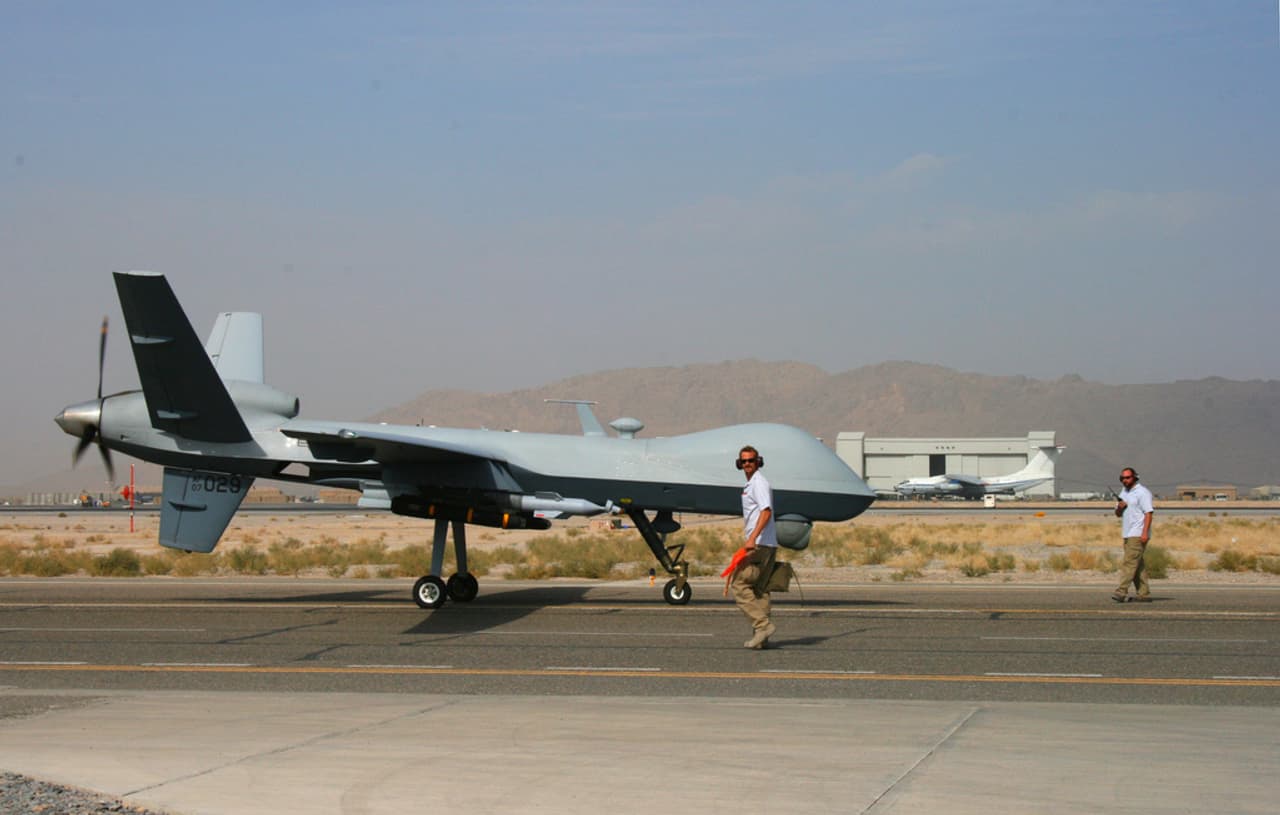
Erased US data shows 1 in 4 missiles in Afghan airstrikes now fired by drone
Ground crew attend a Reaper in Kandahar, Afghanistan (Photo: David Axe/Creative Commons)
Drones are now firing nearly a quarter of all air-launched missiles in Afghanistan, just as the US military deletes its drone figures.
The US military has stopped publishing data on drone use in Afghanistan, claiming missions that include drone strikes are ‘the exception’ – just 3% of all drone flights. However, the figures themselves demonstrate the increasingly important role played by drones in airstrikes by the US and its allies in Afghanistan.
The now-deleted figures show unmanned aircraft fired 23% – nearly one in four – of all missiles used in coalition airstrikes in January – up from just one in 20 in 2011.
Until October 2012, all statistics on drone use were classified. The move to publish data came after months of pressure from the Bureau over accessing drone strike data for ‘conventional’ wars such as Afghanistan, Libya and Iraq.

The Bureau argued that there was a strong public interest in publishing such material. Afcent eventually agreed, and added a new section to its Afghan monthly statistics showing the number of missiles fired by drones from 2009 onward.
‘Disproportionately focused’
The US military has stopped publishing data on drone use in Afghanistan as part of its monthly statistical release – and removed all drone data from each preceding month on its website.
An Air Force spokeswoman told the Bureau the data had been deleted because it ‘disproportionately focused’ on drones. Drone strikes were ‘the exception, with only about 3% of all RPA [drone] sorties over Afghanistan involving kinetic events [bombings].’
But this apparently low ratio is due to the high number of armed drone missions being flown – in fact, drones are playing an ever-more vital role in airstrikes, as reported by the Bureau in December after the data was first declassified.
Related story – Revealed: US and Britain launched 1,200 drone strikes in recent wars
At the same time as it started publishing the figures, Afcent also released to the Bureau an expanded set of data from 2008, which also showed the number of missions flown by drones, and the number of drone strikes or ‘kinetic events’. The number of kinetic events is different from the number of missiles fired, since several missiles can be used in a single attack.
That data showed that three times as many drone strikes had taken place in Afghanistan as in neighbouring Pakistan, where the CIA flies drones in a covert bombing campaign.
– Afcent spokeswoman
Although it was notably missing one of the key metrics – information on how many people had been killed, and who they were – the data nonetheless offered a rare insight into how drone use has expanded in Afghanistan over time
Soon after providing information to the Bureau, Afcent declined to release the full data set to others, the Bureau has learned. Winslow Wheeler, a former member of the US’s Government Accountability Office who now directs a project at the Center for Defense Information, approached Afcent for the same data, but was refused.
‘They like to put the data out there for advertising purposes to show how great they are, and the moment someone starts picking at it to find out what the data really says they withdraw it,’ Wheeler told the Bureau.
Afcent continues to publish information in its monthly statistics on how many missiles have been fired in all Afghan airstrikes, including by drones.
But the latest release, published on February 28, no longer features drone-only data. And previous editions published on the Afcent website have had their drone statistics removed too, as Air Force Times revealed.

In an emailed statement, an Air Force spokeswoman told the Bureau that Afcent removed the data ‘in co-ordination with the International Security Assistance Force’ (Isaf), the Nato-led mission to Afghanistan. The decision was made as ‘a determination found the data disproportionately focused on RPA kinetic events.’
The statement added: ‘A variety of multi-role platforms provide ground commanders in Afghanistan with close air support capabilities, and it was determined that presenting the weapons release data as a whole better reflects the airpower provided in support of Operation Enduring Freedom.’
The Bureau asked both Afcent and Isaf why previous data releases had now been altered, and whether Afghanistan drones data has now been reclassified. Neither was willing to offer an explanation.


